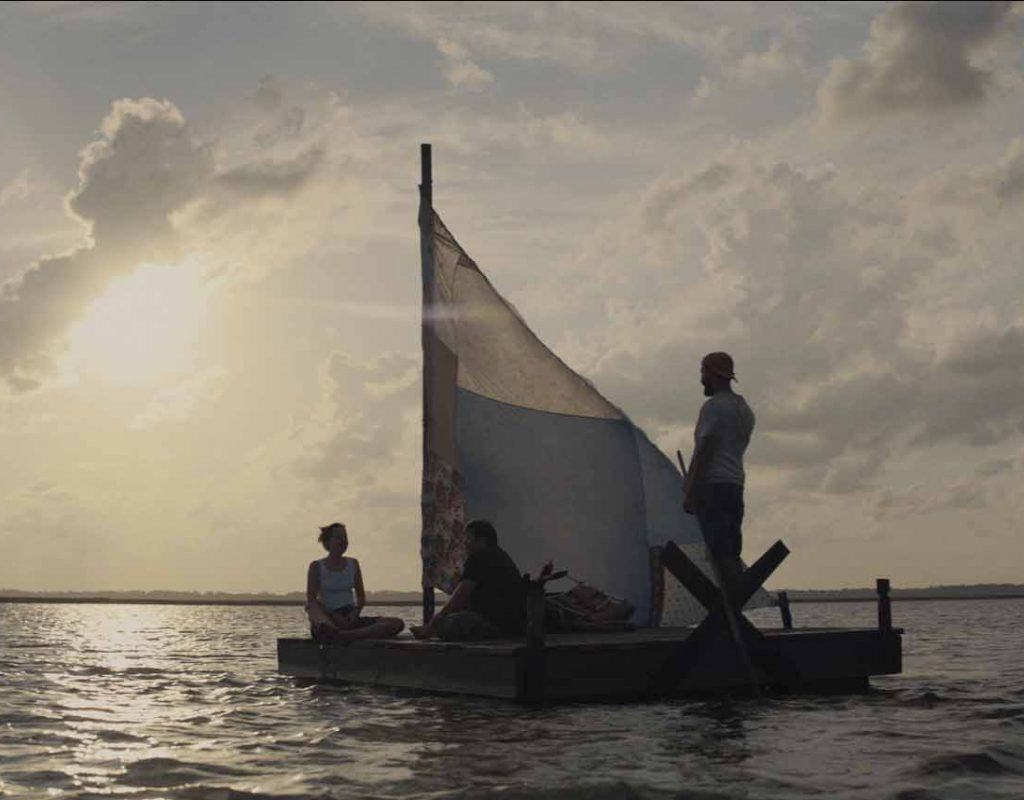Kevin Tent, ACE, has been nominated for an Oscar and numerous ACE Eddie Awards for his work on Election, About Schmidt, Sideways, The Descendants, and Nebraska. He also won an ACE Eddie for The Descendants.
Today, Kevin and I discuss his work on in indie film, Peanut Butter Falcon, which he cut on Adobe Premiere.
(This interview was transcribed with SpeedScriber. Thanks to Martin Baker at Digital Heaven)
HULLFISH: Last time we talked was when you did Downsizing. You did that with director Alexander Payne. You’ve done a bunch of films for him.
TENT: I’ve done pretty much every film that he has directed except for his French short that was released a few years ago. I was on another movie when he did that. I started out with him on his very first feature Citizen Ruth then Election then About Schmidt then Sideways, The Descendants, Nebraska then Downsizing. I think that’s all of them.
HULLFISH: What is the key to those long-term relationships, like Joel Cox and Clint Eastwood, Thelma with Martin Scorsese, Sally Menke with Quentin Tarantino?
TENT: Personally we get along very well. We’re similar in some respects. He grew up in Omaha I grew up in Buffalo, New York. We’re about the same age. And when we first met he said the producers had been dangling a lot of very established editors in front of him but he didn’t want to have a “godfather,” he wanted to have a partner.
I do other projects between his films as it takes him longer to get his next one going. So I’ll go edit something else. I like to think when we’re back together I’m a sharper editor than I was when I left him last. But he’s a very good editor in his own right too, and I think that goes for Marty and also Quentin. I think they’re not only great directors but very very good editors, to begin with.
HULLFISH: I didn’t know you were from Buffalo. I’m from nearby — Brockport, NY. I used to be a news cameraman for WOKR-TV in Rochester and shot in Buffalo all the time. I went to SUNY Brockport.
TENT: I went to SUNY Oswego, but then I dropped out and moved to California and went to film school out here.
HULLFISH: Is this a new director for you?
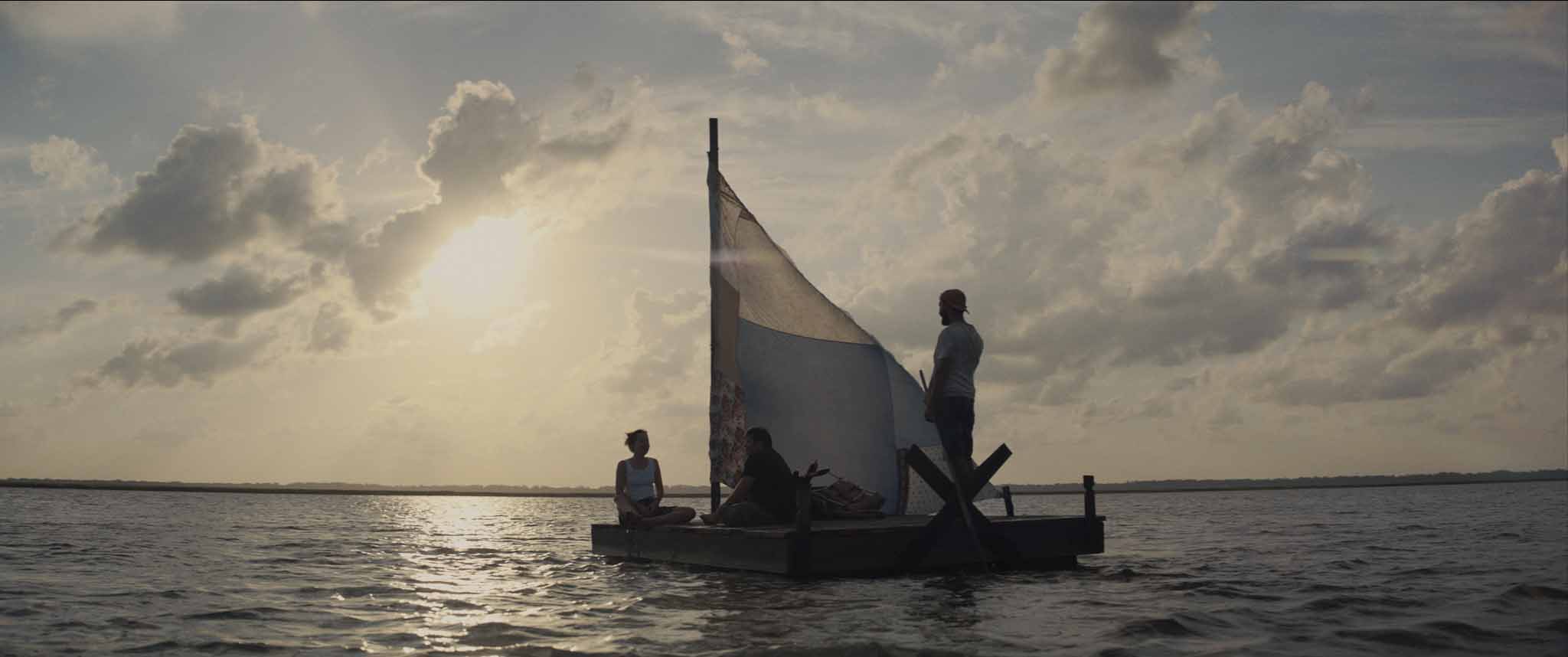
TENT: Yeah. I’d worked with the producers before (Albert Berger and Ron Yerxa), they had been working on the cut for a while — the directors (Tyler Nilson & Michael Schwartz) were editing themselves — and they needed some help. Albert and Ron produced Election and Nebraska. And they’re going do Alexander’s next film. They asked “Hey, would you help us out?” So I came on and worked with the guys (Tyler & Michael) and also worked with Nat Fuller who I would like to give a big shout out to, too.
HULLFISH: And Nat had worked with you before as an assistant, right?
TENT: Yes. Many years ago I worked on Maleficent, for Disney. Just for a short time and he was an assistant on that movie. I remember him being a really sweet guy. That was maybe six or seven years ago. It was a nice coincidence that we hooked up again. He’s made the move into cutting. He joined Peanut Butter Falcon right before I came on. Nat has now gone on to cut Stranger Things. He’s done two, I think three seasons of that!
HULLFISH: What was the schedule like for you guys? You said that you’ve got a bunch of movies coming out all at the same time, so you probably edited this a while ago?
TENT: It was over a year and a half ago that we finished. We finished in February or March 2018. So it’s taken a long time to come around. I think they waited for South by Southwest and they had to finish the music and stuff like that. So it just took them a while. It seems like people are really responding well which is great. Have you seen it yet?
HULLFISH: I have not seen it.
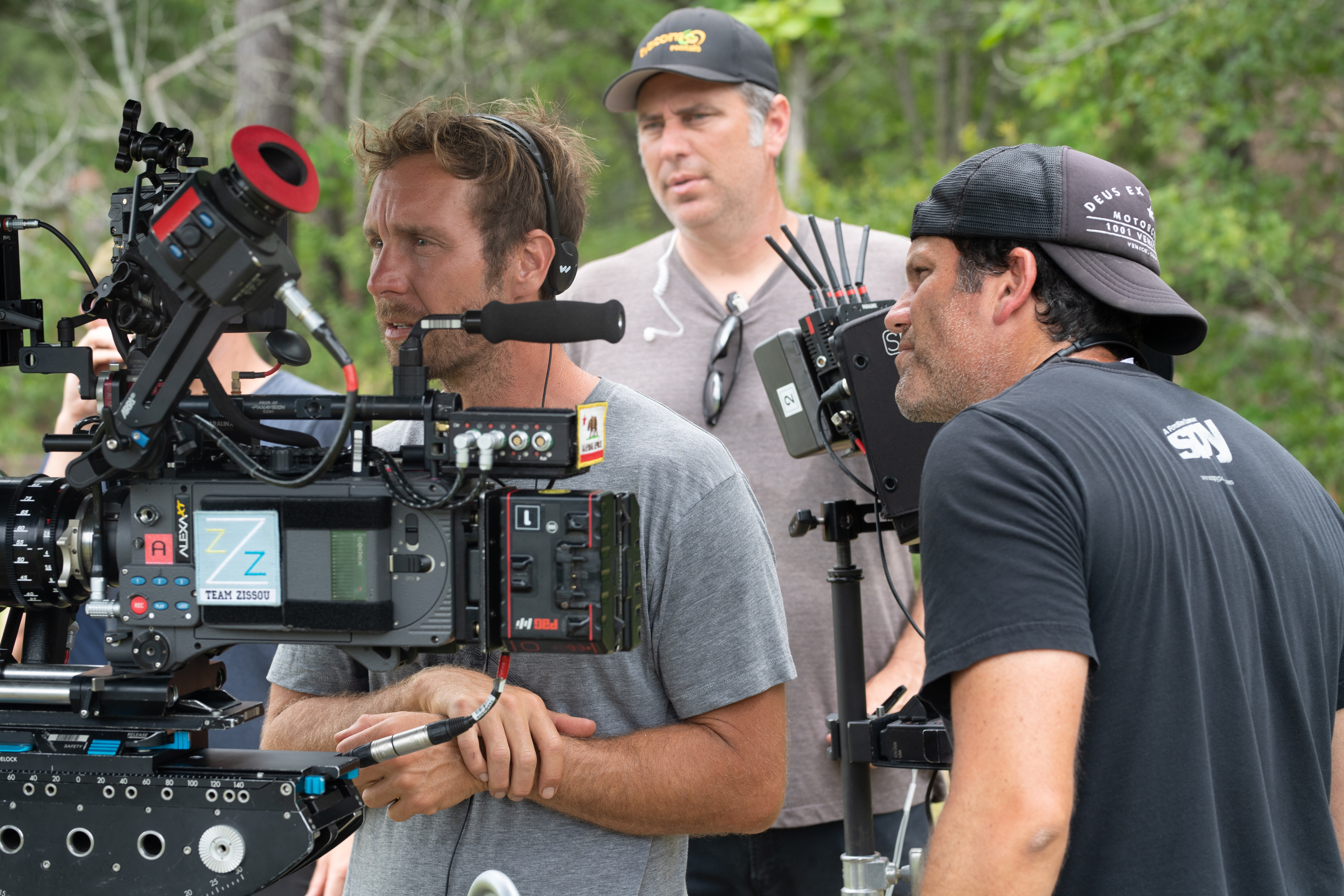
TENT: It’s pretty great. It’s a feel-good movie, but really funny. It’s just one of those magical things where everything kind of seems to work.
HULLFISH: This is a film that you were brought on to kind of in the middle…
TENT: The directors were editing themselves. But, you know it’s hard to edit your own stuff especially if it’s your first movie. I think that makes even harder. And Michael — one of the directors — has done a lot of commercial editing and a lot of stuff like that. So it wasn’t like he didn’t know anything, but a feature was a little more challenging. They had written it and they had directed it and they were very close to it.
When I came on one of the bigger things I tackled was reducing the subplots of the movie to really subplots. They were wed to a lot of things that I felt you didn’t need to really focus on so much. There was a backstory with Tyler (Shia LaBeouf) and his brother which I reduced to flashbacks instead of full-on scenes. That really helped the overall flow of the movie. It was something they probably would have gotten to on their own at some point. But it’s hard to let go of stuff that you wrote and directed.
But being able to step back I could see that that was kind of clunking up the beginning of the movie. We went with a more abstract approach to some of these flashbacks. Which ultimately were more emotional. It was a little hard for them at first, but they knew the movie was getting better and better as we embraced some of these changes.
HULLFISH: You were brought on by the producers. Did that cause any political difficulties or was that a useful thing?
TENT: Well, it’s definitely useful for the end project. The guys — Tyler and Michael — were really pretty supportive right off the bat. They knew that they were kind of stuck. They knew they needed to do something to shake it loose so they were supportive.
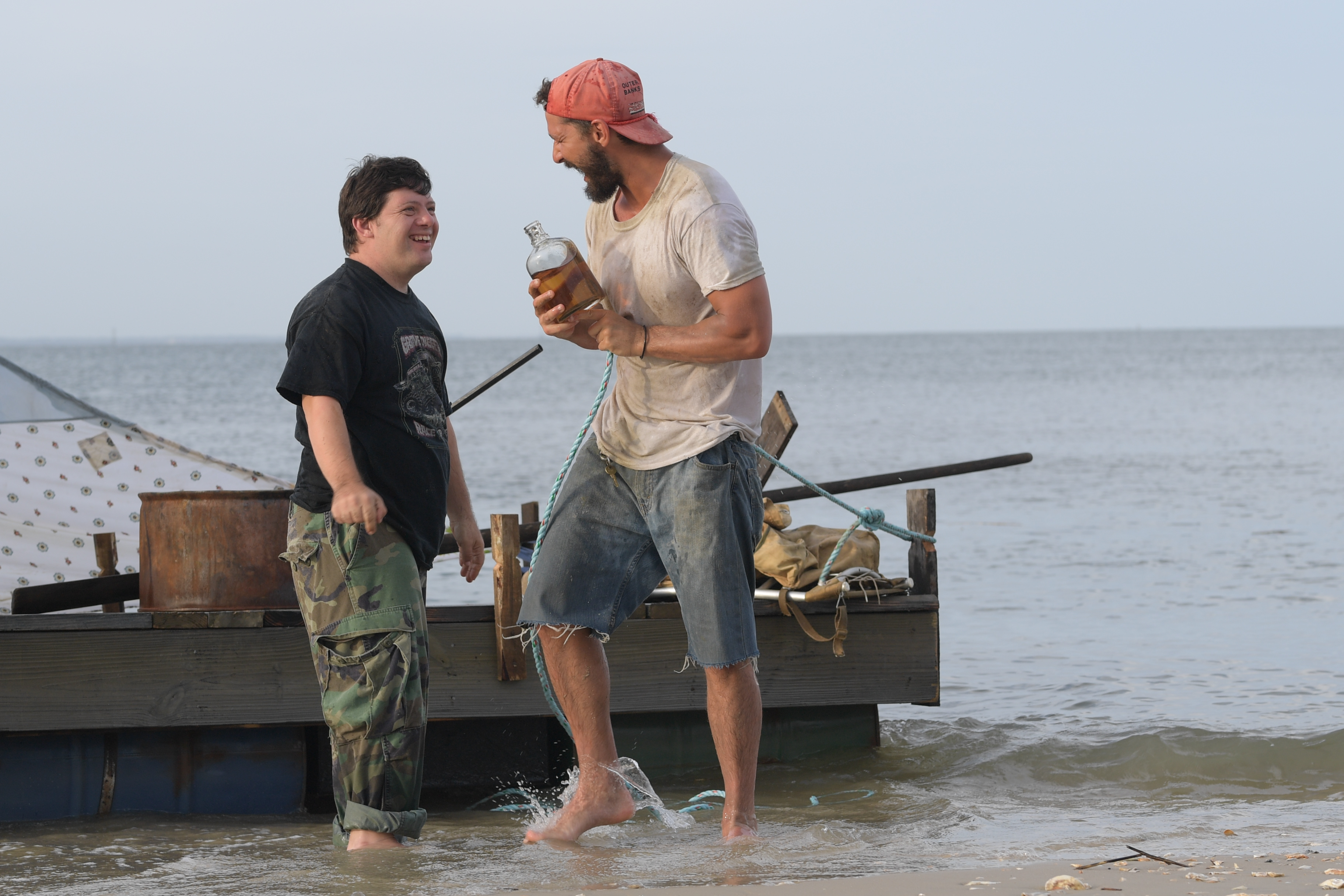
I had asked just to work for a few weeks on my own to get to know the footage and also experiment because I hate experimenting really radical ideas with people in the room. You always feel like you’re under time constraints and you don’t want to spend half an hour doing something stupid. So sometimes you don’t try things, but when I’m on my own, I will try all different things and sometimes they work, sometimes it just is a catalyst for something else.
HULLFISH: How long did you work on the film?
TENT: About ten weeks I think. So about what a director’s cut would be. I think I worked for six weeks on my own. Couldn’t quite get to the whole movie done by that time. Then I had a week or two of just working on the ending with Nat. Nat had done a lot of work roughing it in, he did a great job.
The ending’s this big wrestling match and it’s got a lot of cross-cutting and stuff going on, so that took some time. Then we previewed it and then we did about maybe two or three weeks of changes after that. But it didn’t really change too much from the preview. The cut was in good shape. We scored very well at the preview and that was exciting.
HULLFISH: You talked about the cross-cutting in the final scenes. Do you mean like between an A and a B story?
TENT: Yeah, an A and a B. Between a wrestling match going on and then there’s a bad guy (John Hawks) coming for Shia’s character and then there’s a C story with Dakota Johnson handcuffed to a car steering wheel and she’s trying to get loose. So we’ve got all these bits going on.
HULLFISH: I know it was a while ago, but when you think back to that cross-cutting of those storylines what were some of the things that caused that scene to really need attention?
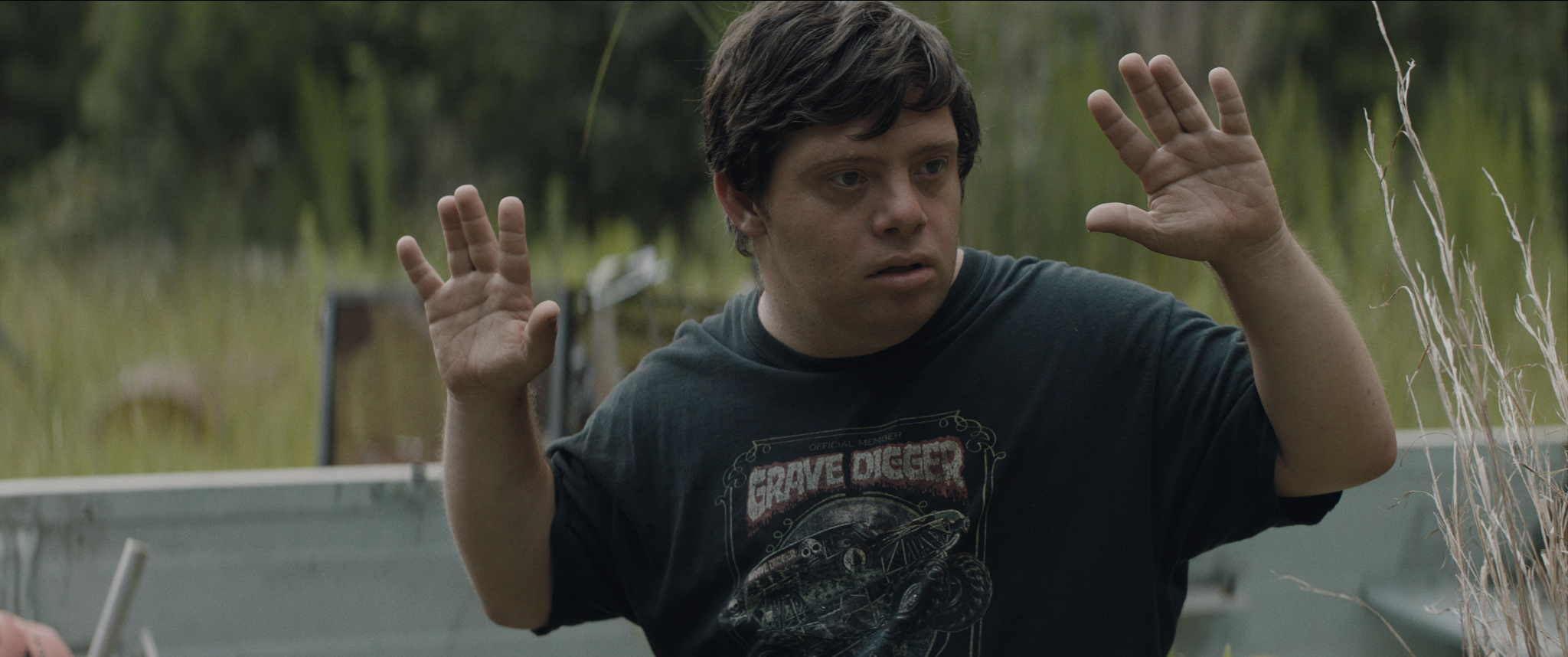
TENT: You want it to be suspenseful so you have this wrestling match going on and Zack is losing the wrestling match. You have to build that up. And at the same time, you are trying to get all these storylines to climax at one point. So you don’t want to be in the wrestling match too long before you cut to the next thing so that people don’t forget that storyline — well, not forget — but lose their emotional attachment to it. I think it’s all about emotional attachment. So you want the audience to be emotionally attached to the wrestling match. You want to be emotionally attached to Dakota Johnson trying to get loose from the car. And you want to be emotionally worried that Shia has got the bad guy coming after him. So you want to keep that balance going, and that just takes finessing and time to play around with it.
HULLFISH: I’m really interested in the fact that it’s a process, right? It’s not just a one and done kind of thing.
TENT: Yeah… It’s a process alright. You work and work and work on it and then you look at it the next day and say, “No. Not working yet.” Maybe I have to rethink how it starts or drop whole sections. Or put sections and beats back. It’s constantly changing until it suddenly feels right. Or right enough at that moment. The next day you start again. Maybe refine the sequence or maybe it works enough to move onto the next step and actually show it to people.
HULLFISH: You talked about directing a little bit. You’ve directed several things. What do you think you’re directing does for your editing or vice versa?
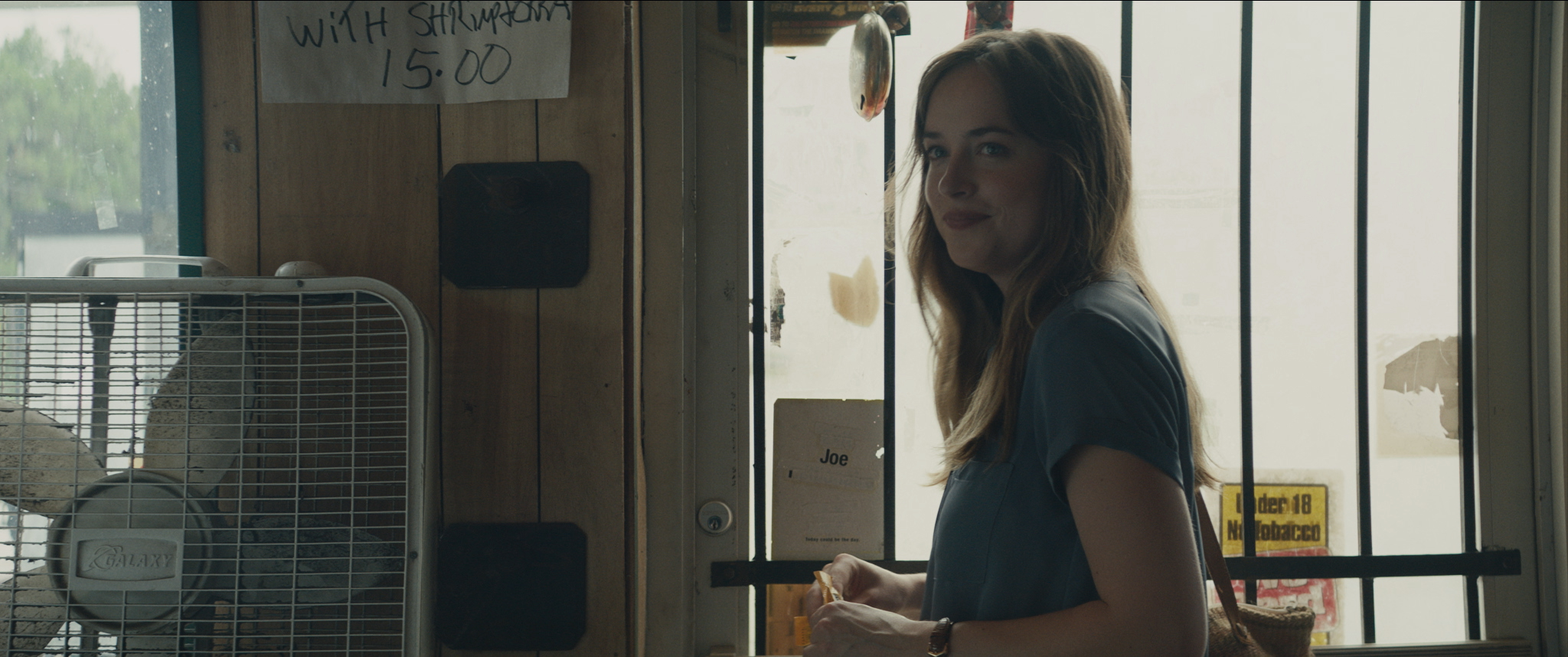
TENT: I directed a movie a couple of years ago called Crash Pad. I’ll tell you what it did for me in the editing room. I was already extremely empathetic to directors. I am probably more empathetic than most about how difficult it must be on the set, but after the experience of directing I had even more empathy and more sympathy for how difficult it is to catch anything that’s good on camera. In my opinion, it’s a miracle a movie ever comes out good. So I think I’ve gained more empathy, understanding, and sympathy for the directors I work with. Less judgmental of the footage and more accepting of what we’ve got.
On the flip side, I had one comforting thought in my mind while I was directing, that — worst-case — if something’s really bad – I can cut it out and figure out some way around it. So that was a big plus for me while I was directing. The biggest thing is having understanding and sympathy and empathy for the footage you have. Sometimes there’s a tendency for editors to complain: “Why didn’t you get that shot?” I don’t think I’ve ever been a big complainer although I’m sure I said those exact words before but I know “it’s hard out there.” Now I am more careful to not be critical of that kind of stuff, and just accept that this is the footage. What do we do? How can I be the best editor to fix what the problems we have right here?
HULLFISH: You mentioned that for the directors you were working with on this film even though that they CAN direct, it’s great to have another set of eyes. When you directed, you hired somebody for your film. You knew that despite how well you edit, you needed someone else to cut for you.
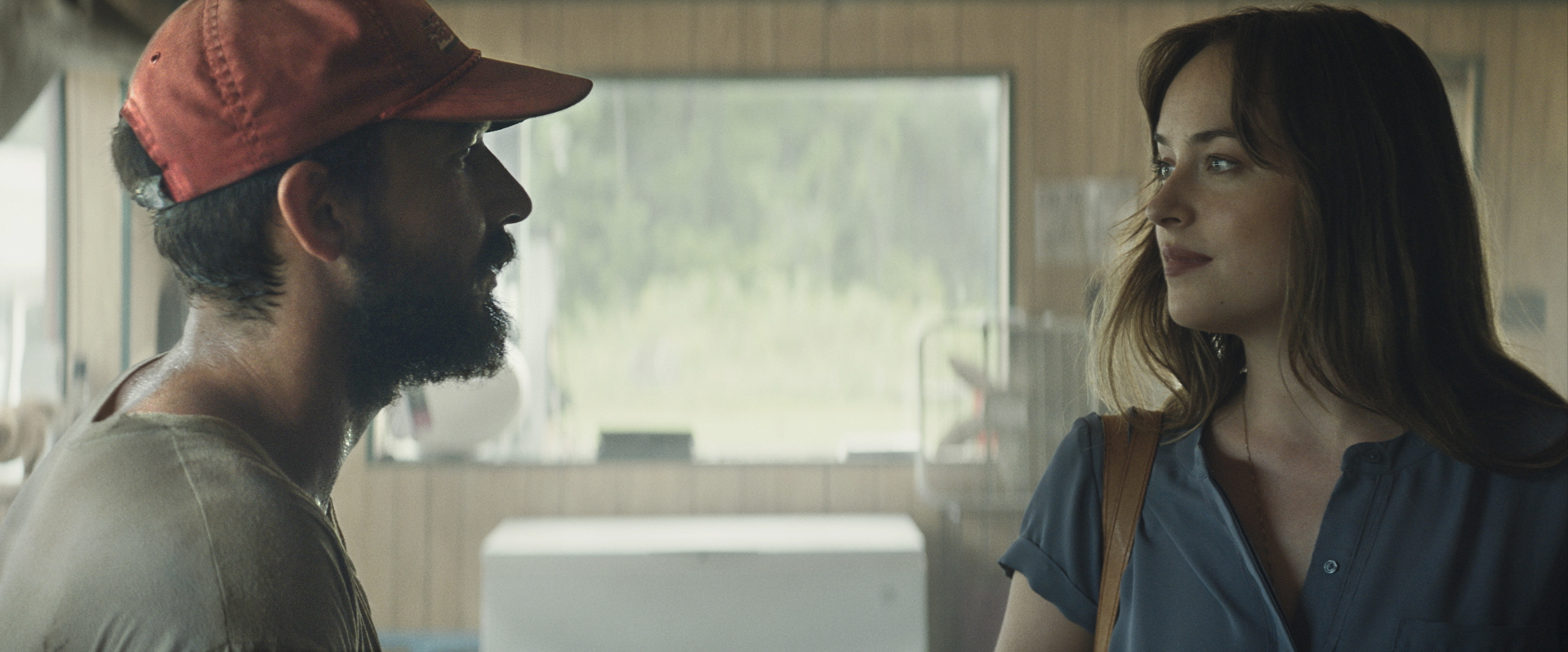 TENT: Well I couldn’t help myself. I really couldn’t. I did some editing too. I was like, “Oh my God! This is a mess! I think I’m the only person that can try to get myself out of this one.” Franco Pante was the main editor, we worked really closely together. It was fun. And he was terrific. We just passed scenes back and forth. He’d work on this and I’d work on that and then he’d take it back and try this. It was creative, productive and fun.
TENT: Well I couldn’t help myself. I really couldn’t. I did some editing too. I was like, “Oh my God! This is a mess! I think I’m the only person that can try to get myself out of this one.” Franco Pante was the main editor, we worked really closely together. It was fun. And he was terrific. We just passed scenes back and forth. He’d work on this and I’d work on that and then he’d take it back and try this. It was creative, productive and fun.
HULLFISH: You don’t edit with other people a lot do you?
TENT: A couple of times, but primarily I’m a one-man band, which I kind of like, but I would do a bigger project.
HULLFISH: You just seemed to be happy about working with another editor — there’s that collaborative sense and you get to talk to somebody else and throw things back and forth. Some people do that a lot and some people don’t.
TENT: It all depends on the project too. Every project’s different, which is one of the great things about the film industry.
HULLFISH: On other films, when you’re finished with dailies do you start assembling scenes — one scene to the next — immediately? When do you start assembling scene to scene to scene?
TENT: If you have two scenes that they shot that actually go together then I would probably put the two scenes together while I’m assembling. But other than that I keep them all separate in a bin and then when I have a bunch of them and I can tie them together and if I’m missing one I’ll just put “scene missing” graphic and keep on going.
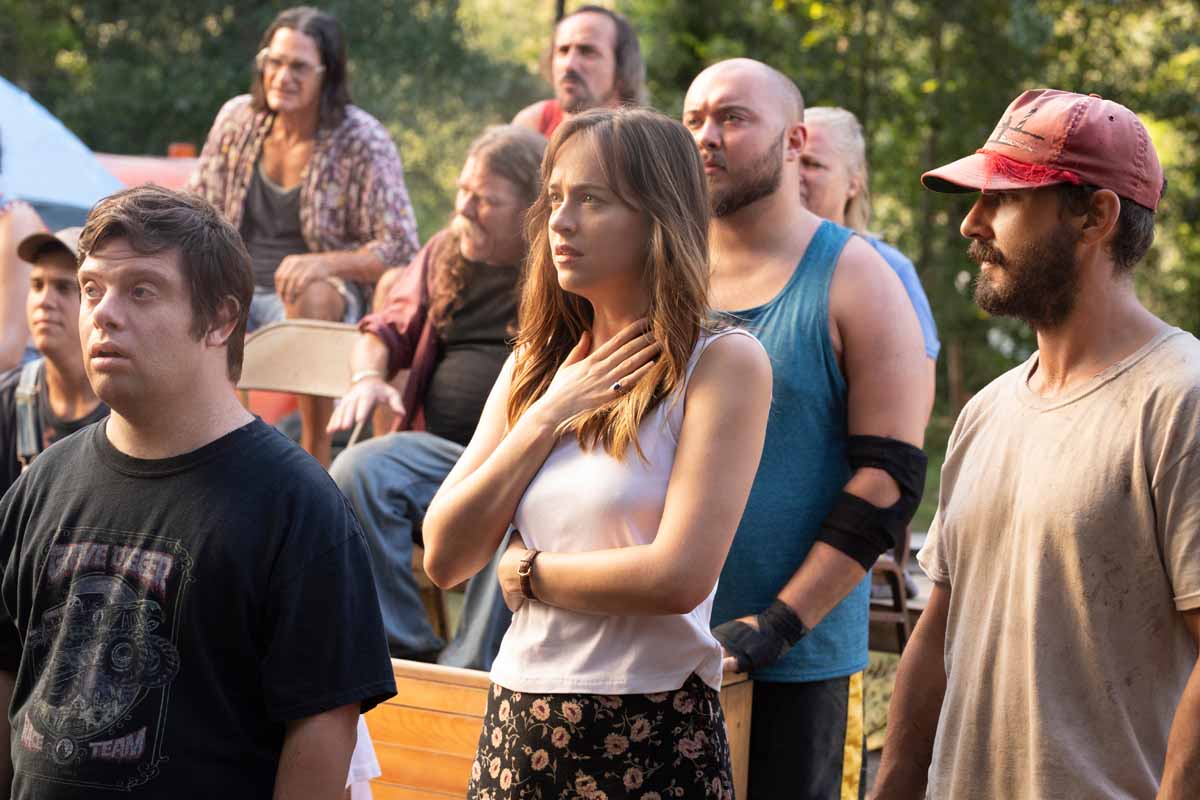
HULLFISH: With some of the films you’ve done, they’re pretty quirky. Do many of them have ad-libbing in them?
TENT: Alexander’s movies? Not much ad-libbing.
HULLFISH: So, they’re the kind of movies that are written with very specific dialogue in mind?
TENT: Yes. He likes the actors to follow the dialogue. So his movies may feel that way sometimes — and maybe Sideways — Thomas Haden Church did a lot of ad-libs but for the most part actors stuck to their pages because that’s how he likes it.
Other movies — Peanut Butter Falcon for instance — lots of ad-libs. Shia is a really remarkable actor and even if he’s ad-libbing he’s so into his character that it just seems so natural and he’s really amazing. I had never edited any footage of his before and I was very impressed with him.
HULLFISH: When you’re working with those kinds of performances there can be tonal differences from one take to another. Do you try to control temperature and tone through performance or take choice? Is that something that you find you’re able to do with some actors?
TENT: With some actors, yeah.
HULLFISH: How are you making those determinations of where the edit needs to be as far as the temperature of a performance?
TENT: It’s really hard to give a specific. I think that’s what editing is all about. You’re constantly adjusting especially subtle performances. It could be dropping a line. It could be adding a reaction shot in a certain spot. It could be shortening a scene by half. There are countless ways to play with a performance, so it’s hard to say.
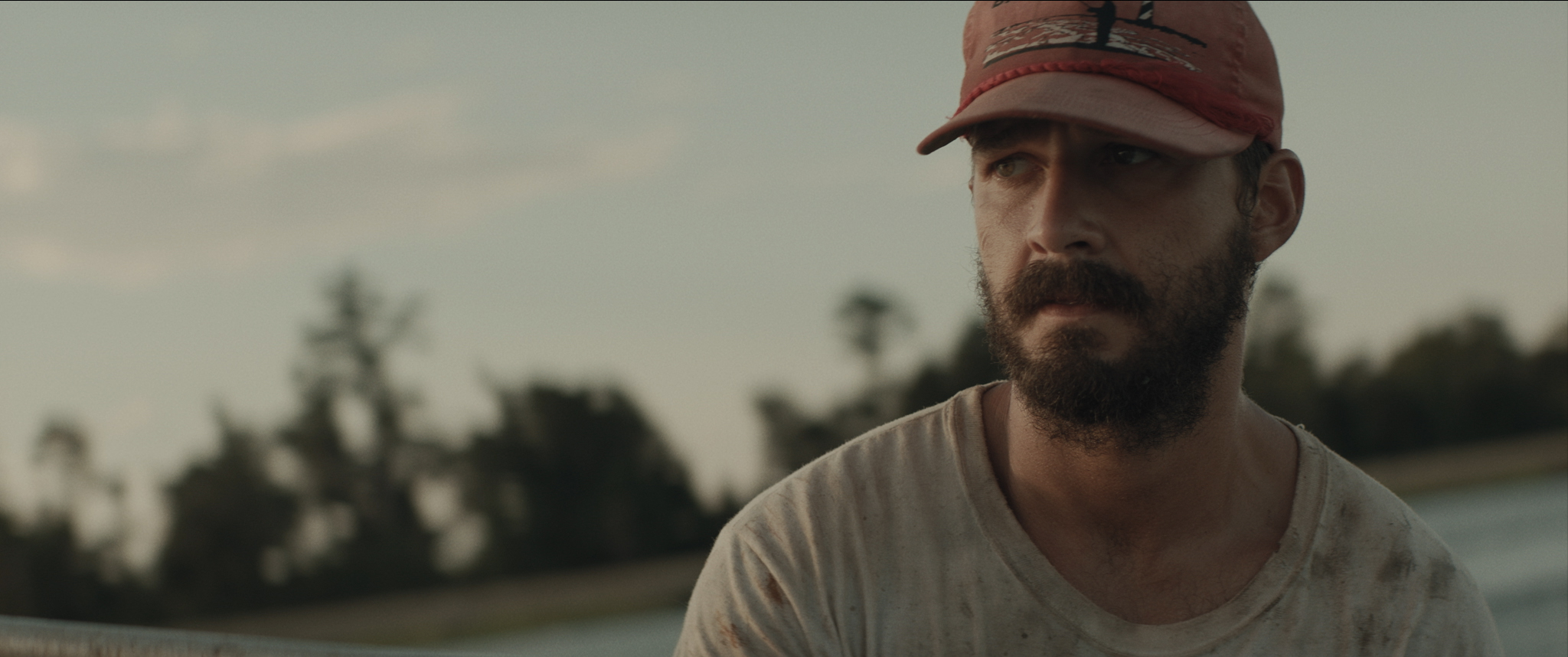
HULLFISH: I’m talking more because he gives you a range of performances and so you’re choosing, “Maybe this performance is better than this performance but the tone or the temperature of this performance is better for this spot in the movie.”.
TENT: Yes. You’re constantly doing that too. That’s constantly happening. You also don’t realize, or can’t tell, till you start watching the movie as a whole. That’s when you might notice that the character’s kind of one way and all of sudden they’re up high and then they come back down, so you want to adjust that so it all seems believable. So it all seems realistic and true and that you don’t have a performance that takes anyone out of the movie. That’s something you’re always looking for but you might not know that until you put the whole movie together or put three or four scenes together.
HULLFISH: Then with a movie like this one where you’re talking about kind of changing parts of how the movie was originally written you’ve got a performance that somebody thought was going to be used one way but now it’s used as a flashback or if you tighten up a movie, one of the things that I found before — let’s say you’ve got to take out a couple of scenes — when you do that you realize the two scenes that weren’t supposed to go back to back are joined so the performances don’t work now back to back.
TENT: It’s true. That happens all the time. You just kind of figure it out while you’re working on it. Make adjustments to performances in one or both scenes. Or manufacture a few beats between with establishing shots or music or something. A lot of times the audience will let you know about this too. When you screen it for people they’ll feel those bumps in performance if it’s not right. And even if you didn’t see it then you’ll hear about it and realize, “Maybe there’s an adjustment we can make.”
HULLFISH: Can you talk to me a little bit about those screenings.
TENT: It’s super nerve-racking. I always get really nervous because you never know what’s going to happen or how it’s going to play. You hope your movie is playing pretty good. You think it’s in the ballpark. But you don’t really know until you screen for an audience and then you find out for sure.
On Peanut Butter Falcon we had a small producer’s screening after the first six weeks. And they (producers and directors) were happy. It was feeling smooth. It’s telling the story. We’re getting a sense of everything, and it’s a fun ride. That was a very positive screening, but I was very nervous. And our first preview I was nervous too because everyone you’re working with knows the movie fairly well but you never know what an audience is going to say. You’re hoping that they’re going to like it. On Peanut Butter Falcon the screenings were consistently positive, which is good. It gave us even more confidence to keep on going in the direction we we were going in.
HULLFISH: Do you take notes during those screenings or no?
TENT: I don’t. But I remember pretty much everything. At least I think I do. I just try to feel the audience. I can kind of feel when we lose them. So I’m like, “OK. We’ve got to do something in this area because they’ve lost their patience or they’re disengaged.” I think I really just watch for engagement and disengagement and I can feel that. Also, I’ll remember, “I’ve got to fix the bad sound here. Maybe there’s another take of this.” And I’ll remember those kinds of things when I go back to the cutting room.
I used to take notes and I take a notepad with me in case somebody has a good idea I want to write it down, but I find that when I go back to a movie I usually remember what people have said or what I felt. Or what I think they felt.
HULLFISH: This movie was edited in Adobe Premiere which is new to you correct?
TENT: Yes. I inherited a Premiere project. I had used it once briefly before but this was my first time really using it.
HULLFISH: What was the training like? Did you go in a little scared or skeptical?
TENT: I was definitely scared but I jumped right in. I should have probably done things differently, like taken a class or two, but it was one of those situations where I had to start right away. The people at Adobe were very gracious and very helpful, but basically, I just sat down and started using it. Oh and I watched a couple of videos on YouTube. So there was a big learning curve for me and in hindsight, I probably should have taken a class or had someone to sit with me for a day or two or more.
HULLFISH: You just dove right in. That’s brave.
TENT: Yeah, just dove right in, I think it was more foolish than brave. It was a little hard because I’m so used to using an Avid and Premiere does have a way that you can set it up like an Avid, but upon reflection, I wish I wouldn’t have done that. People have told me that it’s not really like cutting with an Avid. You should use it how it’s meant to be used. But it happened so fast. I was trying to relearn it through the lens of an Avid user, and that was kind of hard.
HULLFISH: Do remember how it was organized? Was everything in one project like it is in an Avid? Or did they break it up into separate reels, maybe?
TENT: It was all in one project. Nat and I had to really reorganize it. We had to build it into more of a traditional movie project because it didn’t come that way. Tyler and Michael were used to doing small projects, their shorts, their commercials. And they just loaded tons of footage into a system and started cutting. Honestly, it was kind of a mess. The project was a gorilla to wrestle to the ground and organize, but we did it.
HULLFISH: What are some of the ways that you needed to organize that you felt helped you edit when you did the organization?
TENT: Well, for one thing, we created group clips. Clips hadn’t been grouped yet.
HULLFISH: So, grouping the clips so that you could use them as multi-cam.
TENT: Yes. I don’t think the guys had considered that. We also set up bins and organized them so we could see the clips and takes visually. I don’t think we even had bins organized by scene if I remember correctly. Nat was a big part of getting us up and running.
HULLFISH: With group clips, do you find that the value of those is just being able to cut from one angle to the next without having to find it and match it?
TENT: Yeah I think it’s really useful. Also, I look at group clips together sometimes. For example – in one particular scene in Peanut Butter Falcon, the “A camera” had covered the actors celebrating a birthday party and the “B Camera” rambled around a bar handheld. Picking up various tidbits of footage. A band playing, people cutting cake, people clinking glasses. Having the clips linked helps me remember where a particular “b-cam” shot might be. I’ll remember when an actor says some line, go to it and then look for the corresponding “b-cam” bit I was thinking of.
HULLFISH: Another thing that I would think that an inexperienced editor of any kind or of any age might not organize properly is archiving sequences or edits of scenes or reels. Was there a need to create archival bins of reels that had been delivered or stages that had been reviewed?
TENT: Yeah. Do you mean did we do that in Premiere?
HULLFISH: Yeah when you finally organized.
TENT: We did do that and we did save cuts. I save versions of stuff all the time. If I’m mid-scene when quitting for the night, I’ll save that version from that night in case I want to go back and steal something that I’ve changed the next day of cutting. We were constantly archiving cuts and stuff like that.
HULLFISH: Was there anything in Premiere that you liked?
TENT: I do like a lot of it. I like how you can move tracks around the timeline. And the graphics that they use for the waveforms are very useful, especially for music. We did a lot of music cutting, so that was really handy.
Like I said before – I think if I could do it all over again. I would have taken classes to learn how to use it how it’s intended to be used.
HULLFISH: Anytime somebody complains to me about Avid, for example, I’ll ask, “Well, do you really know how to use it?” I’ve edited two movies in Premiere. I cut one movie in FCP7, and then everything else I’ve cut in Avid. I know my Final Cut Pro experience was bad because I didn’t know what I was doing. So there’s really nobody to blame but myself.
TENT: Me too. I feel that way too. But it was just so fast that I just had to sit down and get started. But then I also think that’s a good way to learn. Just sit down and start doing it.
HULLFISH: Oh yeah. Start blasting through.
TENT: What do you prefer if you’re given the choice?
HULLFISH: For me I prefer Avid. But that’s definitely because of my comfort level with it. You and I have probably been on Avid about the same amount of time. I’ve been on Avid since 1992. So when you’ve been working on something that long, I know it inside and out. I can do whatever I want to do I don’t have to think about what I’m doing, I just do it. And I also troubleshoot fairly well. And when I get on Premiere, there’s so much stuff to like, but then I get lost.
TENT: And there are workarounds, but you just don’t know them. It was a good experience. I’m glad I had a chance to use it.
HULLFISH: What have you been working on since?
TENT: I also have another movie coming out soon that I worked on as an additional editor. It’s called The Brian Banks Story which is also really good. And then a sweet comedy also really good called Otherhood. It’s a Netflix film. Really cute and charming and funny.
Also, I did a film a few years ago called Disconnect with a director friend: Henry Alex Rubin — a great film that nobody ever saw and his new movie Semper Fi is coming out. I’m not sure when. That was the other one I did last year. I had a busy year. I was doing lots of smaller films that were done quickly. The last thing I actually finished was Otherhood, which is out now. I finished that in April.
And up next – I’m waiting for Alexander to start his next film hopefully in October.
HULLFISH: That’s a big issue with a lot of editors who work with directors that always want them to be part of their projects. If you’re the favorite editor of a director, how do you schedule your movies to time out with their movies? You don’t want to sit around too long with nothing to do, but you want to make sure you’re available.
TENT: Right. Yeah. It’s tricky. It’s really tricky. I’ve always — knock on wood — been lucky that it’s kind of worked out. There’ve been a couple of times where it’s overlapped and that’s always been nerve-wracking. I don’t like doing that. Too stressful.
HULLFISH: Tell me about trying to negotiate that.
TENT: It’s hard. It’s really hard to do. Downsizing was a good example. I was finishing my movie while Downsizing was in production. Alexander was OK with it overlapping and we, fortunately, had Joe Bini come in and help. He and I were both cutting while I was trying to finish my movie, but I found it very stressful. Like I wasn’t giving Downsizing enough attention and then I also thought I was not giving my own movie enough attention.
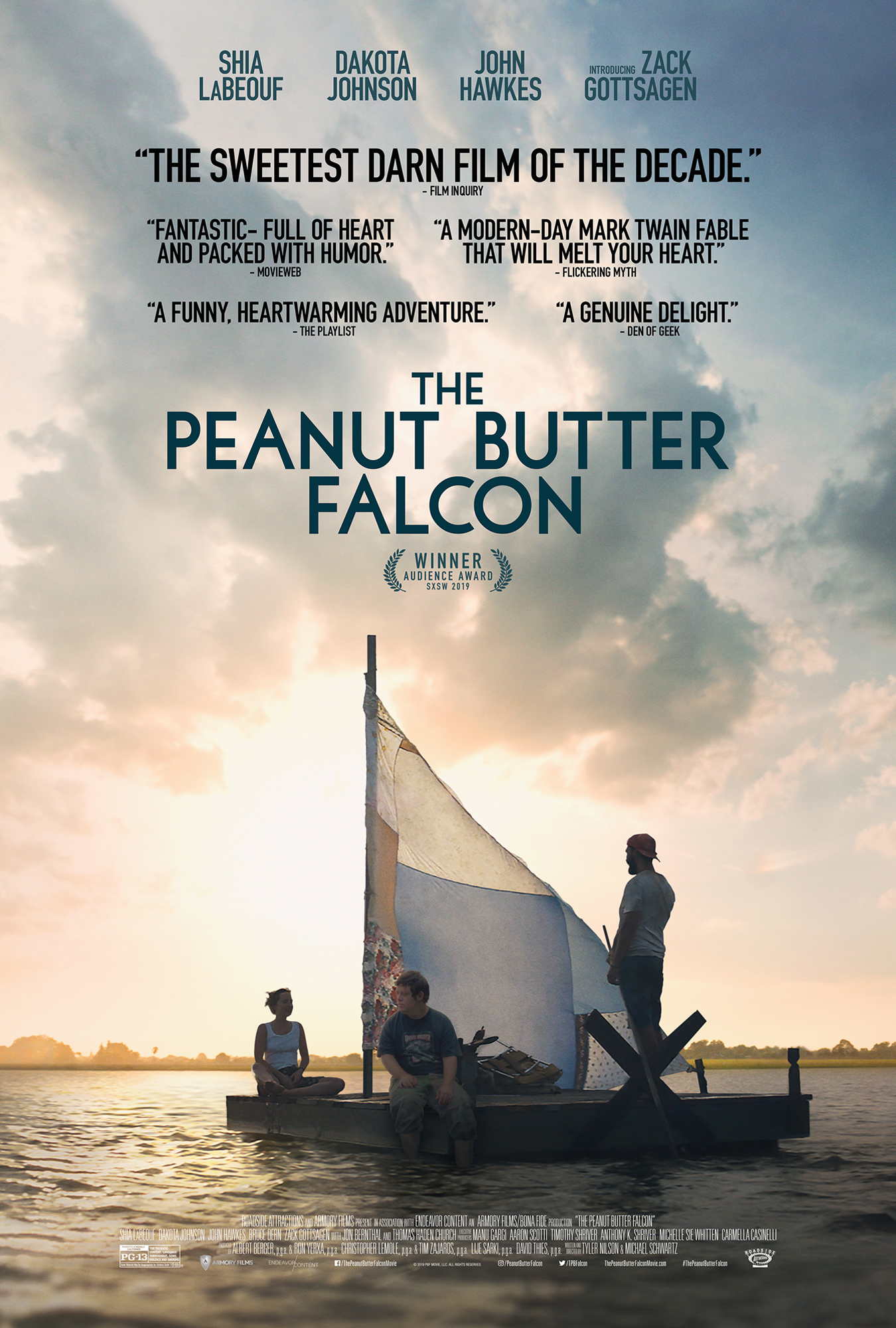 HULLFISH: When you get dailies — when you’re looking at a blank timeline — what do you do?
HULLFISH: When you get dailies — when you’re looking at a blank timeline — what do you do?
TENT: I select things I like as I go along. So I start watching dailies and even if it’s a reaction shot I’ll throw it in the timeline and save it. And I’ll just keep collecting stuff, even sound effects sometimes. Like a door closing or something. I’ll think “Oh, that’s really good. I’ll save that.” I just kind of keep these various things in the timeline, just collect my favorite moments and then start putting it together. Basically editing is hunting and gathering at the same time.
I used to watch dailies all the way through, then go back and start collecting and cutting. But now it seems it’s more efficient to watch and collect at the same time. I copy my selected goodies and start cutting with them and keep pushing all my selects south in the timeline. So sometimes my first cuts of scenes will have behind them, tons of junk or leftover clips of stuff I pulled.
HULLFISH: And how are you using that collection? You’ve got a big selects reel of stuff. Are you cutting from that? Do you pop that in the source monitor and edit from it? Or do you put it in the timeline and use it as a starting point?
TENT: That’s a good question. I do both. Sometimes I’ll match clip to the original daily and cut it in twice.
And then I’ve also gotten into — and maybe you have too — stacking takes on top of each other. Alexander and I do this a lot.
Talking earlier about how we’re regulating performances — we do that a lot, so we’ll have — this performance which is a little hotter, it’s a little angrier here, let’s keep it but I think we should go with this one right now. Then keep on cutting but we keep going back and looking. Sometimes they stay in a cut for a really long time and then other times, once we get it put together, we’ll decide that this is the one we should keep.
HULLFISH: And you’re doing that on two different tracks?
TENT: You can mute that clip in Premiere, which is cool. Avid can do that now too. We’ve been using it for a few years.
HULLFISH: You’re not talking about muting the audio, but muting the entire clip or track, right? So that the clip is in the timeline but if you don’t see it visually or hear it audibly.
TENT: Right.
HULLFISH: Resolve does something similar which allows you to have alternate takes in the same clip in the timeline and switch between them. And even if — for example — let’s say in one take the delivery of a line in a segment takes two and a half seconds but you’ve got another take where there’s a little pause in it and maybe it’s three seconds? It’s still in the timeline as one segment and if you watch one it pushes everything down a half a second or pulls it back a half a second. It’s really cool.
TENT: Really?
HULLFISH: Yeah. Check out Alternate takes in Resolve. It actually even flows between takes that are different lengths so you can see both takes in context of the edit without changing the length of either take.
With a lot of your films — well most films, right? — The plot is about one thing but then the subtext is something different. What does that mean to you when you’re trying to cut a film and you know this film is really about loss even though it seems to be about wrestling?
TENT: I think what’s interesting is that… That’s something that evolves. Peanut Butter Falcon is a good example of what you’re saying. It’s really a movie about family and you don’t realize it at first. And all the editing we did eventually made that subtext stronger. It’s not something consciously we were trying to do but I think as the film evolved and got tighter and more focused that came to the surface. And that’s what’s kind of sweet about the movie. You have these three main characters who are all kind of orphans and alone and then through this crazy story they all hook up and become a family. Very sweet.
Subtext is something that I think you can’t really force. It’s a big question. I think those things just kind of hopefully evolve organically and naturally. I think that’s why Peanut Butter Falcon works so well. Very strong undercurrents which an audience feels more than intellectually thinks about.
HULLFISH: Let’s talk about the idea of how you deal with a director — and it would be interesting for you to talk about how it’s different with someone that you work with so often, like Alexander. Your collaboration with him might be very different than with other directors that you worked with less.
TENT: My approach is I am just pretty honest of what I think is better for the movie. Michael and Tyler were great fun to work with. We had our differences and ultimately it’s their choice what they decide, but I’ll give my pitch of why and what I did as opposed to how they had it before. And then it’s kind of up to them to either go for it or not.
I’m not super pushy, but one time I said that to Alexander and he said, “Oh Yeah right!” (sarcastically) (laughs) I think I try to be really clear on why I make some of the decisions I make. And why I think something is better for the movie or for a character.
A lot of it is personal preference. Ultimately they’re the director of the movie and they have the final say. If I REALLY believe in something I’ll go back to it again — a couple of times — but I usually abide by my “Three Time Rule” which is that I only bring up a significant idea or cut three times. Like dropping a scene or swapping a performance. If the fish aren’t biting the first time around and I really feel it’s important I’ll bring it up two more times over the course of the cutting. It might be the very last day of the mix where I’ll bring it up a third time — if I really believe in it — but after three times you have to let it go. You don’t want to become annoying or create trust issues with the director. Plus… so many times while cutting I thought something was so critically important, then I see the movie later and I think… “what was I worried about? That still works.”
HULLFISH: As far as relationships that are more established, like with Alexander, the other advantage that you’ve got is that you’ve maybe said stuff to them that they didn’t agree with, but it was later shown to be correct so they see — eventually — that you were right. And when that happens enough times you gain some credibility.
TENT: Right. I know. It’s true. But he and I – we don’t get into anything like that. We don’t take ownership of things in the movies. I figure what happens in the room when we close the door – happens and whatever comes out comes out. We don’t say to ourselves “that was my idea.” Because it’s never really anyone’s idea. It’s a combination of people working on a project or scene and whatever comes out is what comes out.
HULLFISH: Right, because on something where you truly believe, “That was my idea.” It was still triggered by….
TENT: Yes!
HULLFISH: …your director maybe saying something that didn’t work, but that’s how you came up with your idea.
TENT: Exactly. So that’s why I think the editing rooms is this sanctuary where stuff happens and when it comes out of the room hopefully it’s good. Who knows or cares why things came out the way they did? It was a combination of everything that happens in there.
HULLFISH: Because the producers brought you onto this film was there any tension between the directors and the producers and your relationship with them?
TENT: In this circumstance, everyone I think felt there needed to be some help or they needed some fresh eyes on the project. I had breakfast with Tyler and Michael right before I started — and they were excited about having someone else help, because I think they had been working really hard, but they were just stuck a little bit.
HULLFISH: So two directors?
TENT: Tyler and Michael Yeah.
HULLFISH: How did they interact with each other?
TENT: It’s interesting. They’re really great guys. They’re super talented. They’ve known each other for years. They’re really good buddies. They made a short film together, and they know Zach. It’s a great story behind the making of this movie. Zach, they met at a filmmaking camp in Florida I believe where Zach’s from — for Down’s syndrome children and adults. They really love Zach and Zach’s so lovely — you’ll see it in the movies. They decided to work on a script with him. So many of the ideas in the script are things that Zach came up with. They were so open to his ideas. Zach loves wrestling so we’re going to work this wrestling thing into the movie. Zach loves to swim, so we’re going to work this swimming thing into the movie and that’s how they wrote it. That’s how they directed it and that’s how they were in the editing room too.
HULLFISH: Thank you so much for chatting with me. I really enjoyed talking about this movie with you.
TENT: I can’t wait for you to see it. So please let me know. I’d love to hear what you think.
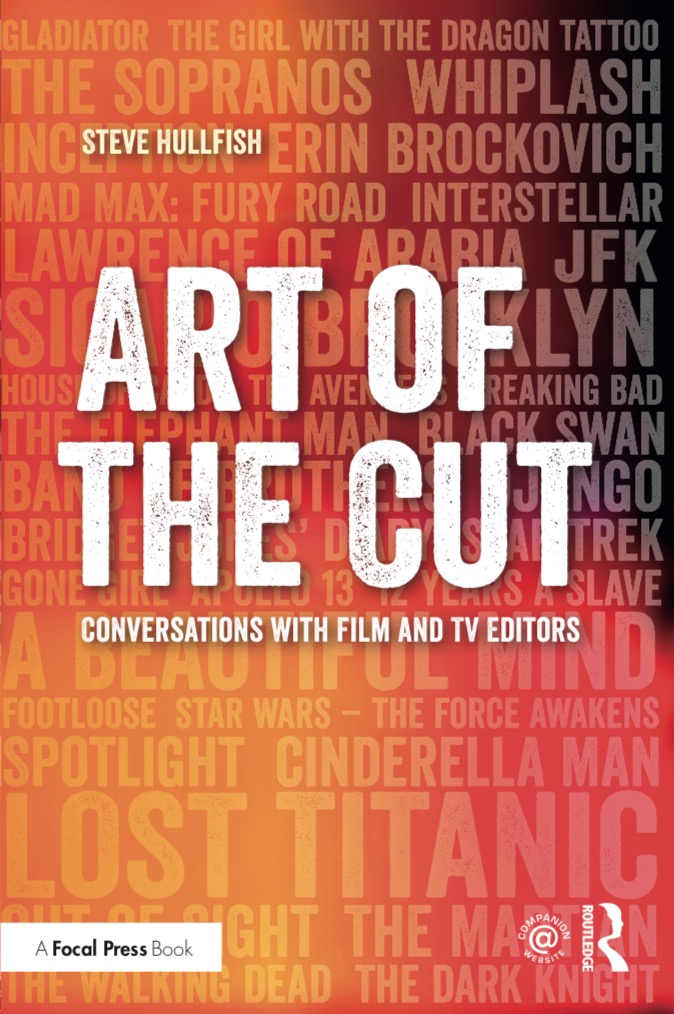
To read more interviews in the Art of the Cut series, check out THIS LINK and follow me on Twitter @stevehullfish
The first 50 interviews in the series provided the material for the book, “Art of the Cut: Conversations with Film and TV Editors.” This is a unique book that breaks down interviews with many of the world’s best editors and organizes it into a virtual roundtable discussion centering on the topics editors care about. It is a powerful tool for experienced and aspiring editors alike. Cinemontage and CinemaEditor magazine both gave it rave reviews. No other book provides the breadth of opinion and experience. Combined, the editors featured in the book have edited for over 1,000 years on many of the most iconic, critically acclaimed and biggest box office hits in the history of cinema.

Filmtools
Filmmakers go-to destination for pre-production, production & post production equipment!
Shop Now